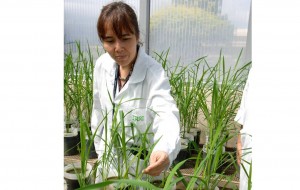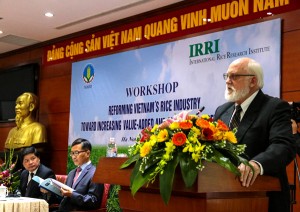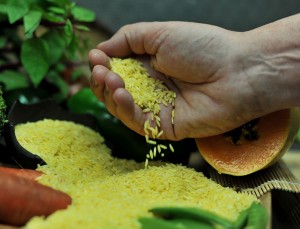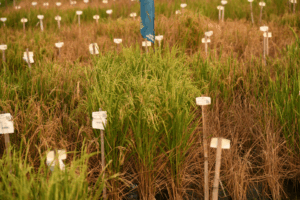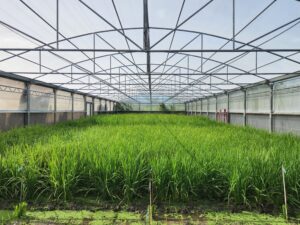Scientists from Japan and the International Rice Research Institute (IRRI) have discovered a rice gene that, in preliminary testing, increased production by 13-36% in modern long-grain indica rice varieties—the world’s most widely grown types of rice.
Scientists from Japan and the International Rice Research Institute (IRRI) have discovered a rice gene that, in preliminary testing, increased production by 13-36% in modern long-grain indica rice varieties—the world’s most widely grown types of rice.
“We discovered the gene, SPIKE, in an Indonesian tropical japonica rice variety,” announced rice breeder Dr. Nobuya Kobayashi of the NARO Institute of Crop Science in Japan. Dr. Kobayashi is a former IRRI scientist seconded from the Japan International Research Center for Agricultural Sciences (JIRCAS).
Tropical japonica rice is mainly grown in East Asia and accounts for only about 10% of global rice production. Incorporating SPIKE into indica varieties that are very popular and widely used across 70% of global rice-growing areas could significantly contribute to food security.
IRRI breeders had earlier observed traits related to higher yield potential—such as large panicles, large leaves, a vigorous root system, and thick stems—in several Indonesian tropical japonica rice varieties. At the time, however, the specific gene responsible for higher yield among these varieties had not been identified.
The discovery of SPIKE, which is published today in the scientific journal Proceedings of the National Academy of the United States of America (PNAS), means that breeders can now start incorporating the gene into popular indica rice varieties. The gene can improve plant architecture without altering grain quality or growth periods.
“Using a new approach of combining molecular identification of the SPIKE gene and conventional breeding, we have developed rice, with the SPIKE gene, that has higher yield when compared with an equivalent rice without the gene,” Dr. Kobayashi said.
The function of the SPIKE gene was validated by IRRI scientists.
“Our work showed that SPIKE is indeed one of the major gene responsible for the yield increase that breeders have spent many years searching for,” said Dr. Inez Slamet-Loedin, head of IRRI’s Genetic Transformation Laboratory.
Breeders at IRRI are now using SPIKE to boost the yield potential of leading local rice varieties.
“Testing of new rice varieties that have the SPIKE gene is under way in multilocation trials across several developing countries in Asia, including Indonesia. We believe that these will contribute to food security in these areas once the new varieties are released,” said Dr. Tsutomu Ishimaru (in photo above), an IRRI and JIRCAS rice breeder who is now leading the work to develop new varieties with the SPIKE gene.
Erratum: In some copies of the printed version of the 2013 annual report. Dr. Ishimaru is incorrectly identified as Nobuya Kobayashi of the NARO Institute of Crop Science in Japan. The correct caption is: Tsutomu Ishimaru, IRRI and JIRCAS rice breeder, inspects a rice plant with the SPIKE gene. He is leading the work to develop new varieties with the gene.
The IRRI-Japan Collaborative Research Project is supported by the Ministry of Foreign Affairsand the Ministry of Agriculture, Forestry and Fisheries of Japan. JIRCAS is also a key partner of the Global Rice Science Partnership (the CGIAR Research Program on Rice).

